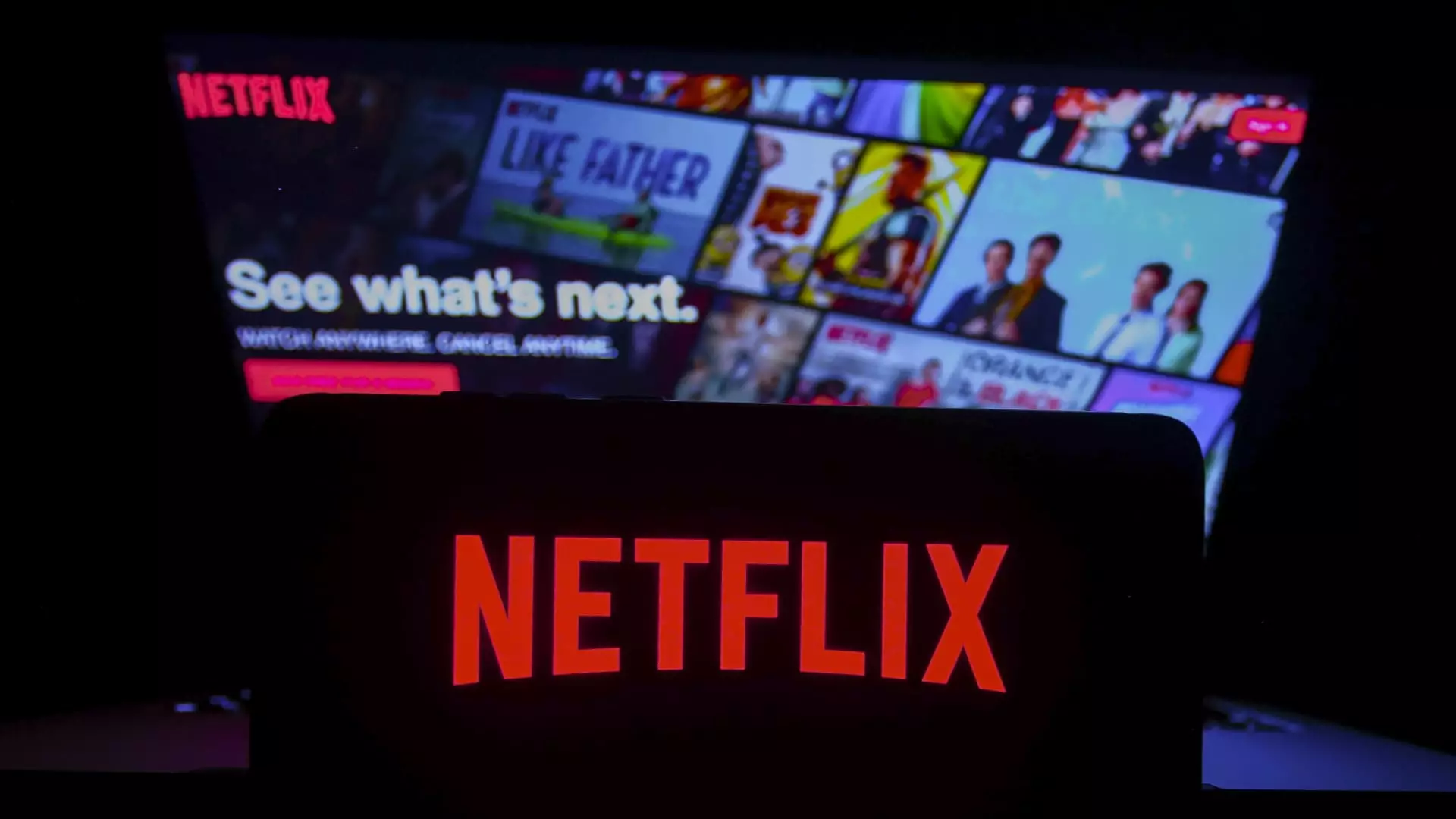Once hailed as the undisputed titan of streaming, Netflix now finds itself teetering on the edge of an uncertain future. Despite its impressive past and recent record-breaking earnings, the optimism surrounding its dominance appears increasingly unwarranted. The narrative that Netflix is unassailable is being challenged from multiple angles, and not by insignificant competitors but by the broader shifts in how audiences consume content. The rise of YouTube and other user-generated platforms equipped with artificial intelligence tools signals a tectonic shift that could undermine Netflix’s carefully curated empire.
The streamer’s recent earnings reveal resilience in numbers but mask a troubling decline in viewer engagement. While subscription growth remains strong, the overall amount of viewing per user is diminishing. This disparity suggests that Netflix’s content, once a stopgap for those hungry for high-quality scripted shows, is losing its grip on viewers’ time and loyalty. The trend reflects a broader societal movement favoring casual, instantaneous content—precisely what YouTube offers in abundance—and raises serious questions about the longevity of Netflix’s current business model.
Complexities of Competition and Technology
The competitive landscape is expanding beyond traditional rivals. YouTube, a platform built on free, user-generated content, now captures a significant slice of viewers’ attention—13%, compared to Netflix’s 8%, according to recent Nielsen figures. While Netflix’s original strategy was to dominate the scripted series market, the advent of freely accessible, high-quality content on YouTube threatens to erode its core audience. The platform’s vast ecosystem, driven by community engagement and easily digestible clips, appeals to a broad demographic seeking entertainment without the financial commitment.
Adding to this complexity is the impending influence of artificial intelligence. While AI promises cost reductions and more targeted advertising, it also democratizes content creation in unprecedented ways. Amateur creators armed with AI tools can produce professional-looking videos, blurring the line between high-production corporate content and grassroots creativity. This shift could accelerate YouTube’s dominance and fragment audiences further, making Netflix’s once-unassailable position more tenuous. The platform’s ability to adapt in this environment will determine whether it sustains its current valuation or becomes yet another casualty of AI-driven democratization.
Are We Overestimating Netflix’s Resilience?
The recent earnings report painted a picture of strength, but the market’s reaction suggests investors harbor doubts. The stock’s decline of nearly 11% from its June peak signals that the narrative of unstoppable growth is being reconsidered. If engagement continues to decline, revenue from advertising and subscriptions may also stagnate or decline, threatening Netflix’s long-term viability.
The overarching concern is whether Netflix can evolve quickly enough to stay relevant against an increasingly fractured media landscape. Its reliance on hit shows and premium content might no longer suffice. Meanwhile, competitors like YouTube, with their vast, diverse, and rapidly customizable content offerings, are better positioned to adapt to the new AI-driven content creation era. This strategic divergence could widen the gap between Netflix’s traditional model and the future of entertainment, which seems to favor accessible, community-driven, and AI-optimized content hubs.
Ultimately, Netflix’s current resilience might be its greatest vulnerability. Relying on past successes and a somewhat complacent confidence in its dominance could blind it to the disruptive forces brewing beneath the surface. As new content creators leverage AI and audiences gravitate toward free, engaging platforms like YouTube, it may turn out that Netflix’s golden era is approaching its twilight—unless it fundamentally rethinks its approach to engagement, innovation, and audience connection.

